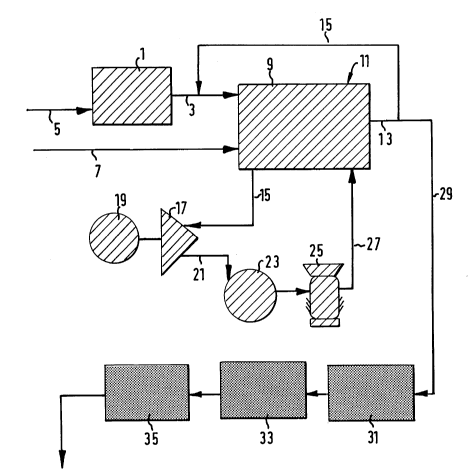Some of the information on this Web page has been provided by external sources. The Government of Canada is not responsible for the accuracy, reliability or currency of the information supplied by external sources. Users wishing to rely upon this information should consult directly with the source of the information. Content provided by external sources is not subject to official languages, privacy and accessibility requirements.
Any discrepancies in the text and image of the Claims and Abstract are due to differing posting times. Text of the Claims and Abstract are posted:
| (12) Patent Application: | (11) CA 2018266 |
|---|---|
| (54) English Title: | METHOD TO PRODUCE ENERGY AND CARBON DIOXIDE |
| (54) French Title: | METHODE DE PRODUCTION D'ENERGIE ET DE GAZ CARBONIQUE |
| Status: | Dead |
| (52) Canadian Patent Classification (CPC): |
|
|---|---|
| (51) International Patent Classification (IPC): |
|
| (72) Inventors : |
|
| (73) Owners : |
|
| (71) Applicants : | |
| (74) Agent: | SMART & BIGGAR |
| (74) Associate agent: | |
| (45) Issued: | |
| (22) Filed Date: | 1990-06-05 |
| (41) Open to Public Inspection: | 1991-12-05 |
| Examination requested: | 1997-04-23 |
| Availability of licence: | N/A |
| (25) Language of filing: | English |
| Patent Cooperation Treaty (PCT): | No |
|---|
| (30) Application Priority Data: | None |
|---|
T 6023 CAN
A B S T R A C T
METHOD TO PRODUCE ENERGY AND CARBON DIOXIDE
A method to produce energy and carbon dioxide, comprising
introducing a stream of essentially oxygen and a stream of
hydrocarbon fuel into a combustion chamber, combusting the
hydrocarbon fuel with the oxygen in the combustion chamber thereby
producing an amount of energy and a stream of combustion gas
comprising carbon dioxide, and using at least a first part of said
amount of energy to drive a turbine thereby generating mechanical
energy. At least a first part of the stream of combustion gas is
cooled and recycled into the combustion chamber so as attenuate the
combustion temperature in said chamber.
CS7.T6023PD
Note: Claims are shown in the official language in which they were submitted.
Note: Descriptions are shown in the official language in which they were submitted.

For a clearer understanding of the status of the application/patent presented on this page, the site Disclaimer , as well as the definitions for Patent , Administrative Status , Maintenance Fee and Payment History should be consulted.
| Title | Date |
|---|---|
| Forecasted Issue Date | Unavailable |
| (22) Filed | 1990-06-05 |
| (41) Open to Public Inspection | 1991-12-05 |
| Examination Requested | 1997-04-23 |
| Dead Application | 1999-06-07 |
| Abandonment Date | Reason | Reinstatement Date |
|---|---|---|
| 1998-06-05 | FAILURE TO PAY APPLICATION MAINTENANCE FEE |
| Fee Type | Anniversary Year | Due Date | Amount Paid | Paid Date |
|---|---|---|---|---|
| Application Fee | $0.00 | 1990-06-05 | ||
| Registration of a document - section 124 | $0.00 | 1990-11-09 | ||
| Maintenance Fee - Application - New Act | 2 | 1992-06-05 | $100.00 | 1992-05-05 |
| Maintenance Fee - Application - New Act | 3 | 1993-06-07 | $100.00 | 1993-05-03 |
| Maintenance Fee - Application - New Act | 4 | 1994-06-06 | $100.00 | 1994-05-03 |
| Maintenance Fee - Application - New Act | 5 | 1995-06-05 | $150.00 | 1995-05-01 |
| Maintenance Fee - Application - New Act | 6 | 1996-06-05 | $150.00 | 1996-05-08 |
| Request for Examination | $400.00 | 1997-04-23 | ||
| Maintenance Fee - Application - New Act | 7 | 1997-06-05 | $150.00 | 1997-05-09 |
Note: Records showing the ownership history in alphabetical order.
| Current Owners on Record |
|---|
| SHELL CANADA LIMITED |
| Past Owners on Record |
|---|
| ESLINGER, KEITH MERLIN |
| KAUFMAN, STEPHEN ALLEN |